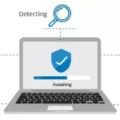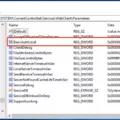Dynamic Application Security Testing (DAST) is an essential tool for ensuring the safety and security of your web applications. It uses automated dynamic testing to identify vulnerabilities that malicious users could exploit. By utilizing these tools, you can help protect your company from potential hackers and cyber-attacks.
When it comes to DAST tools, there are a number of options available on the market today. Micro Focus offers Fortify WebInspect, a DAST tool designed to detect and remediate exploitable web application vulnerabilities with automated dynamic application security testing. Other popular DAST tools include Invicti (formerly Netsparker), Acunetix, Indusface WAS, Intruder.io, Veracode, Checkmarx, Rapid7, and Synopsys.
These DAST tools have a number of features that make them useful for protecting your web applications. They use black-box testing methods to evaluate HTTP/HTML interfaces from the outside in as if they were being attacked by a malicious user. This helps them identify potential vulnerabilities in the system that could be exploited by hackers or malware. Additionally, they are able to scan both web applications and mobile applications for potential threats in order to provide comprehensive protection across all platforms.
When selecting a DAST tool for your organization’s needs, it is important to consider the scope of its capabilities and how well it meets your specific requirements. You should also consider its cost compared to other options on the market as well as its ease of use and integration with existing systems within your organization’s infrastructure.
Ultimately, using a DAST tool is an important step in ensuring the safety and security of your web applications from potential cyber-attacks and malicious actors. With so many different options available on the market today, there’s sure to be one that fits your specific needs perfectly!

The Benefits of Dynamic Application Security Testing Tools
Dynamic Application Security Testing (DAST) tools are used to identify security vulnerabilities in web applications. These tools simulate attacks against an application to detect any weaknesses that exist in the code that could be exploited by a malicious actor. DAST tools can detect common web application vulnerabilities, such as Cross-Site Scripting (XSS), SQL Injection, and authentication bypass. They can also uncover security issues related to insecure server configuration, such as misconfigured headers and weak SSL encryption. DAST tools offer automated scanning capabilities that allow for quick and efficient security testing of applications. By identifying vulnerabilities early in the software development process, organizations can take steps to protect their applications from potential attackers.
Dynamic Web Application Security Testing Tools
The most commonly used tool for dynamic web application security testing is a web vulnerability scanner (WVS). A WVS scans web applications for potential security vulnerabilities such as SQL injection, cross-site scripting (XSS), URL redirection, directory traversal, and other malicious attacks. It also tests for authentication, access control, and authorization issues. A WVS can also be used to detect weaknesses in web server configuration, as well as identify insecure file permissions and weak passwords. A WVS can be used to detect common coding mistakes which can lead to security risks.
Using DAST for Security Testing
Fortify WebInspect is a Dynamic Application Security Testing (DAST) tool used to identify and fix vulnerabilities in web applications. It provides a comprehensive solution for securing web applications by automatically testing them for potential security issues. It includes features such as automated crawling of websites, network-level scanning, authentication handling, and detection of vulnerabilities such as cross-site scripting (XSS), SQL injection, and remote file inclusion (RFI). Additionally, it offers integrated reporting capabilities with detailed information about identified vulnerabilities that can be used to prioritize remediation efforts and track progress. Additionally, the tool allows users to customize scans according to their specific requirements and offers the ability to perform scheduled scans.
Application Security Testing Tools
Application security testing tools are software programs that are designed to identify, detect and prevent security vulnerabilities in applications and websites. These tools help developers and system administrators to protect their applications from malicious attacks. Popular application security testing tools include Invicti (formerly Netsparker), Acunetix, Indusface WAS, Intruder.io, Veracode, Checkmarx, Rapid7, and Synopsys. Each of these tools offers a variety of features that can be used to effectively scan applications for vulnerabilities. These features include deep scanning capabilities that can detect subtle flaws in code, advanced reporting capabilities, and automated scans. Additionally, they can provide recommendations on how to fix identified issues as well as detailed threat analysis reports.
Is Nessus a Static or Dynamic Application Security Testing Tool?
Nessus is a Dynamic Application Security Testing (DAST) tool, not a Static Application Security Testing (SAST) tool. DAST tools are used to identify unknown vulnerabilities in running applications, while SAST tools are used to analyze source code and identify potential security flaws ahead of time. Nessus will scan for known vulnerabilities and is able to detect Common Vulnerabilities and Exposures (CVEs), Bugtraq IDs, and other pre-disclosed vulnerabilities.
Differences Between SAST and DAST
The primary difference between SAST (Static Application Security Testing) and DAST (Dynamic Application Security Testing) is the way in which each performs security testing. SAST scans the application code when it is not running, or at rest, to identify any problems with the code that may present a security risk. This method does not require any access to the source code of the application. On the other hand, DAST tests an application while it is running and does not have access to its source code. Instead, DAST attempts to exploit logical flaws or weaknesses within a running application and analyze how it responds. The results of these tests are used to identify potential security threats or vulnerabilities.
Differences Between DAST and IAST
The primary difference between dynamic application security testing (DAST) and interactive application security testing (IAST) is the timing of when the tests are conducted. DAST is performed before an application goes live and provides an outside perspective on the application. IAST, on the other hand, analyzes running applications using software instrumentation. This means that it can detect vulnerabilities and issues in real time while providing feedback that allows for pinpointing where problems may exist. Additionally, IAST can provide insights into how users interact with the application which can be used to improve usability.
Understanding SonarQube SAST and DAST
SonarQube SAST (static application security testing) is a suite of automated tools that can detect security vulnerabilities in the source code of web applications. It uses static analysis to identify insecure coding practices, such as those that could lead to buffer overflows, SQL injection, cross-site scripting, and other common security flaws. The tool also includes a set of rules that check for compliance with industry best practices and standards, such as OWASP Top 10. SonarQube DAST (dynamic application security testing) is an automated tool that can detect vulnerabilities in web applications while they are running. It works by sending simulated attacks against web applications to discover potential flaws. It is especially effective at detecting attacks related to cross-site scripting and SQL injection.
The Benefits of Utilizing SAST and DAST
Yes, it is recommended to use both SAST (Static Application Security Testing) and DAST (Dynamic Application Security Testing) as part of an effective security program. SAST is a form of testing that takes place before the application is deployed, and looks for coding and configuration issues that could lead to vulnerabilities. DAST, on the other hand, takes place after the app has been deployed, and looks for vulnerabilities in how the application behaves in a live environment. Both methods are important for identifying different types of potential security issues, so using them together is the best approach.
Conclusion
In conclusion, Dynamic Application Security Testing (DAST) tools are essential tools for any organization that relies on web applications. These tools help identify and address potential vulnerabilities in web applications before they cause harm. Popular DAST tools such as Invicti, Acunetix, Indusface WAS, Intruder.io, Veracode, Checkmarx, Rapid7, and Synopsys offer automated dynamic application security testing capabilities to ensure the security of web applications. By regularly using these tools, organizations can be proactive in their approach to security and help protect their business from malicious attacks.








